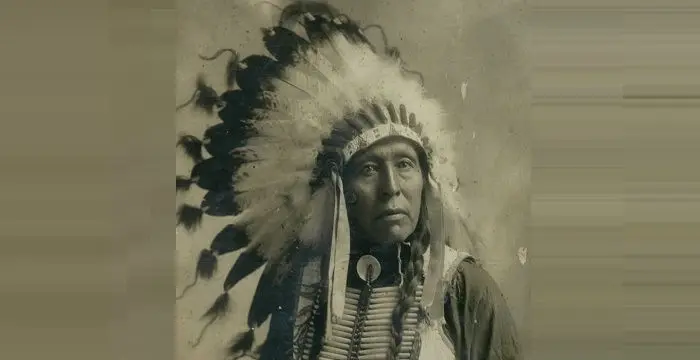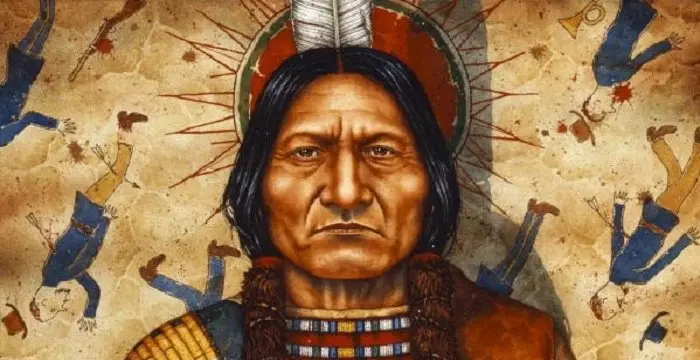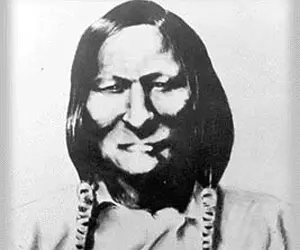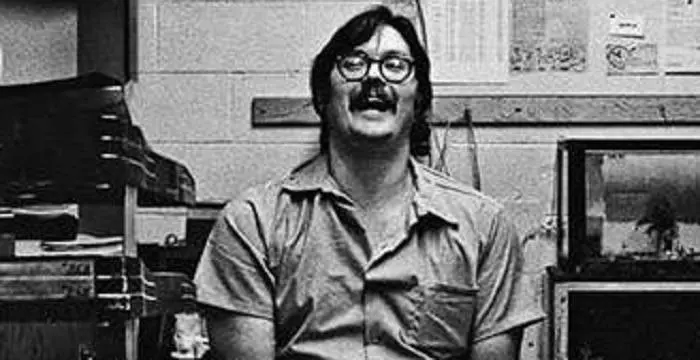
Black Kettle - Leaders, Timeline and Family
Black Kettle's Personal Details
Black Kettle was a leader of the Southern Cheyenne tribe of Native Americans in the 19th century, who repeatedly strived for securing peace for his people
| Information | Detail |
|---|---|
| Birthday | December 7, 1803 |
| Died on | November 27, 1868 |
| Nationality | American |
| Famous | Native Americans, Leaders |
| Birth Place | Black Hills |
| Gender | Male |
| Sun Sign | Sagittarius |
| Born in | Black Hills |
| Famous as | Leader |
| Died at Age | 64 |
// Famous Native Americans
Tecumseh
Tecumseh was a Native American leader of the Shawnee clan. This biography profiles his childhood, life and timeline.
Sitting Bull
Sitting Bull was a Teton Dakota Indian chief who led Sioux tribes in their struggle for survival on the North American Great Plains.
Johnny Depp
Johnny Depp is a famous Hollywood actor renowned for his roles of Captain Jack Sparrow in the ‘Pirates of Caribbean’ movies. To know more about his childhood, profile, career and timeline read on the following biography
Black Kettle's photo
Who is Black Kettle?
Black Kettle was a Native American of the ‘Southern Cheyenne’ tribe, who is revered for his continued efforts to bring peace to his people. He lived at a time when the US government was very insensitive to the rights of Native Americans and used its superior military muscle to repress them. He witnessed a phase wherein the government forced Black Kettle to sign an unfair treaty, then defy the treaty themselves and finally draft a new treaty according to their convenience. In spite of all the injustices, Black Kettle was foresighted enough to realize that they were no match for the Americans in battle, who wouldn’t hesitate to use force against them. Thus he kept signing one unjust treaty after another, as a result facing mutinies from within his own tribe. Even after the ‘Sand Creek Massacre’, where Black Kettle’s childhood friend died and his wife was seriously injured, he did not give up his efforts for peace. Tragically, his efforts finally proved futile as the government crushed the rebellion and confined the Native Americans to small land areas away from their ancestral homes. But, for his efforts to bring peace to his people and for the things he stood for, Black Kettle remains a much respected figure till today, especially among Native Americans.
// Famous Leaders
Edi Rama
Edi Rama is the current Prime Minister of Albania. Check out this biography to know about his childhood, life, achievements, works & timeline.
Tecumseh
Tecumseh was a Native American leader of the Shawnee clan. This biography profiles his childhood, life and timeline.
Khalifa bin Zayed Al Nahyan
Sheikh Khalifa bin Zayed Al Nahyan is the current President of the United Arab Emirates (UAE). Check out this biography to know about his birthday, childhood, family life, achievements and fun facts about him.
Childhood & Early Life
Black Kettle, or Moke-tav-a-to as his family called him, was born in South Dakota near the Black Hills. By 1832, he moved south to join the Southern Cheyenne tribe.
Later Life
‘The Fort Laramie Treaty of 1851’ was signed between the US government and the Cheyennes under which the Cheyennes were assigned lands in Western Kansas and Eastern Colorado.
However, for the next few years, there was extensive uncontrolled migration of white people into Cheyenne territory, especially after the ‘Pike’s Peak Gold Rush’ of 1859. This led to conflict for territory among the Cheyenne and the Americans.
In 1861, the US government forced the Southern Cheyenne to sign a new treaty which allotted Sand Creek land to them. Black Kettle, the leader of the tribe, accepted the treaty in fear of the Americans’ military might.
The allotted land was barren and not suited for agriculture. In addition, epidemics also started spreading across the Cheyenne population. Hungry and desperate, the Cheyenne began to steal resources from nearby settlers, passing wagons and mining camps.
Black Kettle and his childhood friend ‘Chief Lean Bear’ met the U S President Abraham Lincoln in Washington D.C. in 1863. They were given peace medals and letters as a mark of their friendship with the US.
As the attacks by the Cheyenne continued tensions between both sides escalated by 1864, due to a couple of isolated incidents. Black Kettle, in an effort to diffuse these tensions, met the local commander at Fort Weld and signed a treaty, by which all Cheyenne had to report to Fort Lyon.
As Black Kettle returned to Sand Creek, a military group called ‘Third Colorado Volunteers’, led by John Chivington, attacked the Cheyenne camp at Sand Creek, flouting the treaty.
Black Kettle, in an effort to signal the Cheyenne’s peaceful intent, waved both the American flag and the white flag. But the soldiers ignored it and attacked the camp, killing 150-200 Cheyenne people and then mutilating their bodies. Black Kettle managed to escape alive.
The attack caused a conflict of ideology between the Cheyenne and Black Kettle, who still wanted to pursue peaceful negotiations, while a section of the tribe wanted to retaliate with more raids. In 1865, Black Kettle signed the ‘Treaty of Little Arkansas River’ limiting his tribe to areas in South-western Kansas.
In 1867, he signed ‘Medicine Lodge Treaty’, which allotted different territories to them and also promised provisions of food and supplies. But these promises were never fulfilled, which drove more people to join the guerrilla bands.
Major Battles
Black Kettle tried his best to avoid the massacre at Sand Creek by waving a white flag and an American flag over his Tipi. His efforts, however, proved to be futile and the soldiers attacked anyway, leading to a bloodbath. Black Kettle managed to escape unhurt, and even returned to rescue his injured wife. This brutal incident is known as ‘Sand Creek Massacre’.
In 1868, in response to a series of attacks on Kansas farms, General Philip Sheridan planned a retaliatory attack against Cheyenne camps. They attacked the village in which Black Kettle was staying, even though its residents were staying in their allotted lands. In the attack that followed, Black Kettle, his wife and more than 100 other Native Americans were killed.
Personal Life & Legacy
He had four wives, all of whom were sisters and belonged to the Wotapio band. He began to stay with his wives’ tribe after marriage and fathered seventeen children.
He lost his childhood friend, ‘Chief Lean Bear’ in the ‘Sand Creek Massacre’ of 1865, but still continued to strive for peace.
In 1868, troops led by ‘George Armstrong Custer’ unjustly attacked the village where he was staying. This time, there was no escape for Black Kettle and he died on the banks of ‘Washita River’.
The character of this revolutionary and tribal leader was portrayed by actor Nick Ramus in the CBS TV show ‘Dr. Quinn, Medicine Woman’ for three seasons.
Trivia
This Native American leader was among those rare leaders who strived for peaceful negotiations with the US government, as opposed to the guerrilla warfare tactics that the other leaders employed.
// Famous American peoples
Wentworth Miller
Wentworth Miller is an American actor and screenwriter who achieved recognition for his role in the TV series ‘Prison Break’.
Jason Simpson
Jason Simpson is the son of former NFL running back, broadcaster and actor O. J. Simpson. Check out this biography to know about his childhood, family, life, and little known facts about him.
Melissa Brim
Melissa Brim is the ex-girlfriend of former professional boxer Floyd Mayweather Jr. Check out this biography to know about her birthday, childhood, family life, achievements and fun facts about her.
Black Kettle biography timelines
- // 7th Dec 1803Black Kettle, or Moke-tav-a-to as his family called him, was born in South Dakota near the Black Hills. By 1832, he moved south to join the Southern Cheyenne tribe.
- // 1851‘The Fort Laramie Treaty of 1851’ was signed between the US government and the Cheyennes under which the Cheyennes were assigned lands in Western Kansas and Eastern Colorado.
- // 1859However, for the next few years, there was extensive uncontrolled migration of white people into Cheyenne territory, especially after the ‘Pike’s Peak Gold Rush’ of 1859. This led to conflict for territory among the Cheyenne and the Americans.
- // 1861In 1861, the US government forced the Southern Cheyenne to sign a new treaty which allotted Sand Creek land to them. Black Kettle, the leader of the tribe, accepted the treaty in fear of the Americans’ military might.
- // 1863Black Kettle and his childhood friend ‘Chief Lean Bear’ met the U S President Abraham Lincoln in Washington D.C. in 1863. They were given peace medals and letters as a mark of their friendship with the US.
- // 1864As the attacks by the Cheyenne continued tensions between both sides escalated by 1864, due to a couple of isolated incidents. Black Kettle, in an effort to diffuse these tensions, met the local commander at Fort Weld and signed a treaty, by which all Cheyenne had to report to Fort Lyon.
- // 1865The attack caused a conflict of ideology between the Cheyenne and Black Kettle, who still wanted to pursue peaceful negotiations, while a section of the tribe wanted to retaliate with more raids. In 1865, Black Kettle signed the ‘Treaty of Little Arkansas River’ limiting his tribe to areas in South-western Kansas.
- // 1865He lost his childhood friend, ‘Chief Lean Bear’ in the ‘Sand Creek Massacre’ of 1865, but still continued to strive for peace.
- // 1867In 1867, he signed ‘Medicine Lodge Treaty’, which allotted different territories to them and also promised provisions of food and supplies. But these promises were never fulfilled, which drove more people to join the guerrilla bands.
- // 1868In 1868, in response to a series of attacks on Kansas farms, General Philip Sheridan planned a retaliatory attack against Cheyenne camps. They attacked the village in which Black Kettle was staying, even though its residents were staying in their allotted lands. In the attack that followed, Black Kettle, his wife and more than 100 other Native Americans were killed.
- // 1868In 1868, troops led by ‘George Armstrong Custer’ unjustly attacked the village where he was staying. This time, there was no escape for Black Kettle and he died on the banks of ‘Washita River’.
// Famous Sagittarius Celebrities peoples
Billie Eilish
Billie Eilish Pirate Baird O’Connell is an American singer and songwriter. Check out this biography to know about her childhood, family, personal life, birthday, etc.
Jacelyn Reeves
Jacelyn Reeves is a former flight attendant who once had a fling with Clint Eastwood. Check out this biography to know about her birthday, childhood, family life, achievements and fun facts about her.
Edmund Kemper
Edmund Kemper is a convicted serial killer from America who murdered ten people. Check out this biography to know about his childhood, life, crimes and other facts about him.
Pietro Boselli
Pietro Boselli is an Italian model, engineer, teacher, and fitness athlete who became famous as the ‘world’s sexiest math teacher’. Check out this biography to know about his birthday, childhood, family life, achievements and fun facts about him.
Niqoles Heard
Lil Niqo is an American rapper and musical artist. Let’s take a look at his family and personal life including age, date of birth, net worth, girlfriends, and fun facts.
Ted Nugent
Ted Nugent is a hard rock musician known for his hits ‘Stranglehold’ and ‘Cat Scratch Fever’. This biography of Ted Nugent provides detailed information about his childhood, life, achievements, works & timeline.
Black Kettle's FAQ
What is Black Kettle birthday?
Black Kettle was born at 1803-12-07
When was Black Kettle died?
Black Kettle was died at 1868-11-27
Which age was Black Kettle died?
Black Kettle was died at age 64
Where is Black Kettle's birth place?
Black Kettle was born in Black Hills
What is Black Kettle nationalities?
Black Kettle's nationalities is American
What is Black Kettle's sun sign?
Black Kettle is Sagittarius
How famous is Black Kettle?
Black Kettle is famouse as Leader














